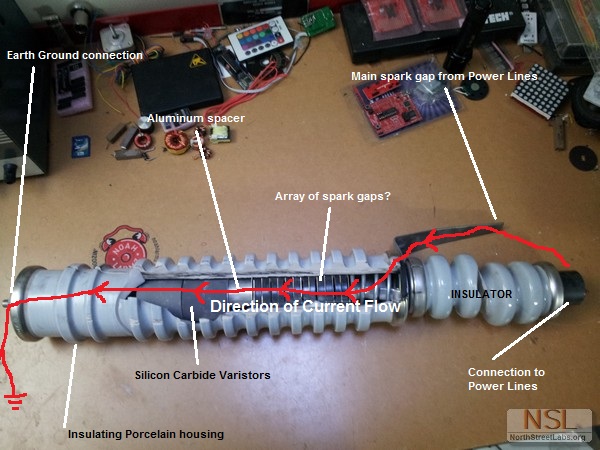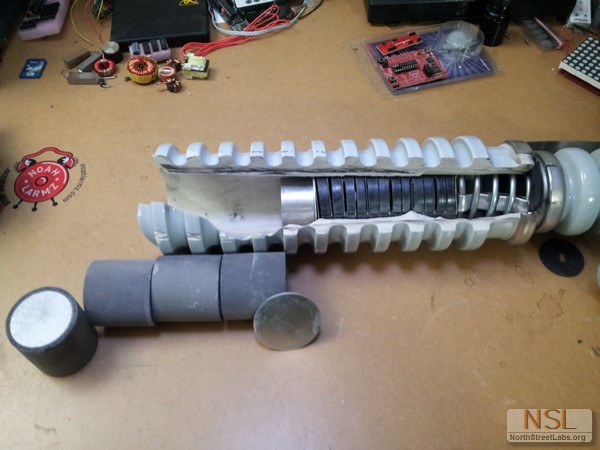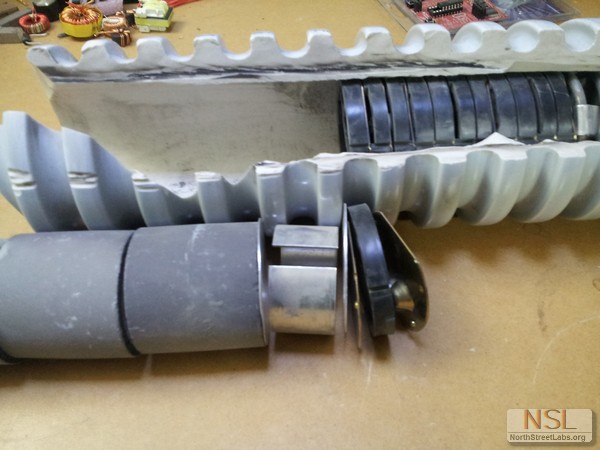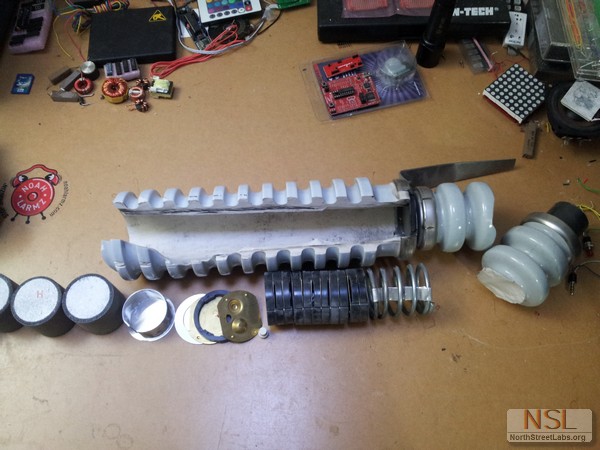What's Inside a Lightning Arrester?
Do you like to take things apart to understand how things work? Why they exist? So do we! In this era of internets we know you can google and click the wiki link to just about anything you desire to know. But there seems to be a true lack of sensory input, all you get are images and words to build a vague understanding. We wish to bring a hands-on and, more importantly, destructive approach to showing what is inside and what makes things tick. We hope to be able to give post one of these each month For the first What's Inside we bring you a lightning arrester!

History:
You know you've seen this device, maybe not this exact model, but you have. They are everywhere, you'll often see similar looking insulators on transmission lines insulating the power line from the structure. Lightning arresters are incredibly important devices in this modern world, protecting every power system from lightning strikes and power surges. The first lightning arresters were invented in 1860 for use in telegraph lines to protect the equipment and operators from lightning strikes. Since then they have been improved and modified for use in electrical applications.
These devices protect by diverting lightning and surges to an earth ground by providing an easier path for extremely high voltage, but in lower voltages seen around the country's power grid they act as insulators. In simple words, these are insulators at low voltage and conductors at high voltage. There are several kinds of basic design:
- Spark Gap based
- Expulsion Tubes
- Metal Oxide Varistor (MOV)
The expulsion tubes are no longer used, and gap based arresters are being phased to the newer MOV arresters that act more like switches than resistors. The one we are going to destroy here is an older SiC Varistor & Spark Gap combo lightning arrester! Specs are:
SurgeMaster LVBB Arrester, Made in USA September 1987, 15,000V Gap 3/4
Lets get to the dirty destruction! Alex can be seen slowly grinding the porcelain casing away:
Here we finally chiseled the rest of the housing away after eating through two masonry grinding wheels.
We thought fire should get involved, so we spent a few minutes with a mapp gas torch trying to melt some SiC. After working on the top, we flipped it over and were still able to safely touch the bottom.
What's Inside:
Inside this arrester we found the Silicon Carbide blocks, an aluminum spacer between two aluminum wafers, and array of brass connectors and insulating spacers, and finally a large spring to keep compression. If you look on the right you'll see the insulated section that connects to the power lines, as well as the metal bar in the background that forms as the spark gap. The far left connection would normally connect to Earth ground. In the event of lightning or power surge the spark gap is first bridged, and the power is redirected through the SiC and to the ground.



